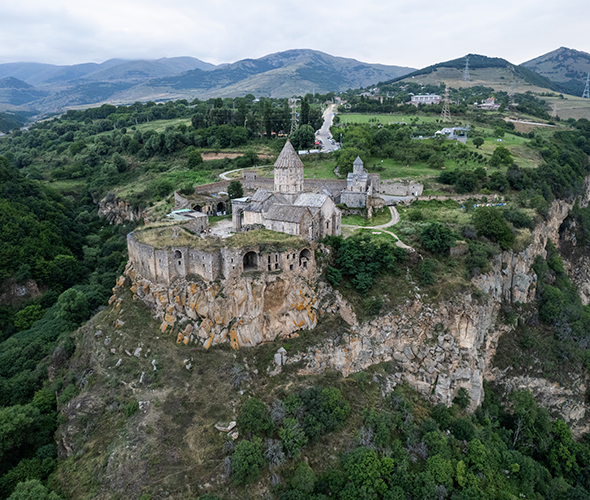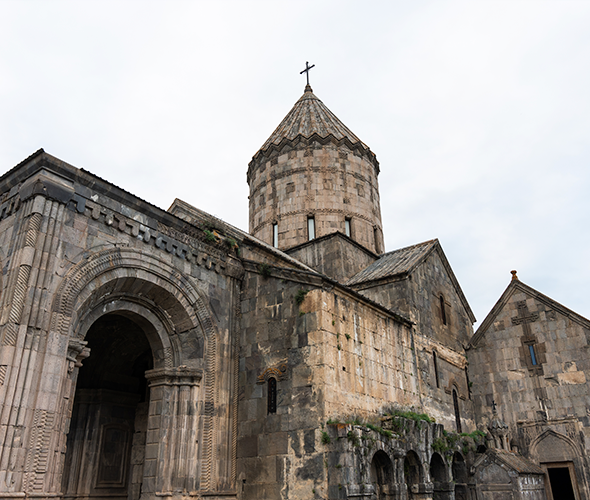Tatev Monastery
Region
Syunik
Distance from Yerevan
253.6 km
Type
Monastery/Church
Tatev Monastery is located in the village of Tatev, in Syunik Province. In the Middle Ages, it became a major center of spiritual, cultural, and political life. The princes of Syunik, closely connected to the Arsacid royal family, greatly supported monastic life by donating estates, lands, and villages, and by building churches. The first structures of the monastic complex were built in the 4th century, shortly after the Christianization of Armenia. Starting from the 9th century, Tatev developed into a full-fledged monastic complex. It was officially founded in 844 by Bishop David in the village of Tatev. The Church of St. Gregory the Illuminator was built in 848, followed by the Church of Saints Peter and Paul (895–906), which is noted for its size, architectural design, and rich interior decoration. Relics of Saints Peter and Paul were placed in the foundations of the church during its construction. In front of the church’s southern entrance stands a unique architectural monument known as the Gavazan (pillar), which had the ability to sway due to its movable base. The monastery was fortified with walls and included a narthex, treasury, scriptorium, hiding places, refectory, workshops, monastic cells, and burial vaults. In the 9th to 11th centuries, the monastery housed about 500 monks, and operated a spiritual seminary, which later became a university. In 1170, the Seljuk-Turkish invasions led to the fall of the Kingdom of Syunik, and Tatev Monastery was devastated. Its library was burned, and about 10,000 manuscripts were lost. The clergy relocated to Noravank in Vayots Dzor. Later, in the 13th century, under the Orbelian princes, the monastery was rebuilt. From the 1280s, Tatev Monastery became a center of resistance to foreign religious influences, preserving the Armenian Church’s identity against external religious currents. The University of Tatev, officially established in the 14th century, became a pan-Armenian intellectual and educational center. Prominent theologians, philosophers, astronomers, miniature artists, and musicians worked there. Its library remained active until the early 20th century. A two-story arched belfry (14th century) and a school of miniature painting were also built in the monastery courtyard. During Timur’s (Tamerlane’s) invasions in the late 14th century, the monastery was again destroyed, and Bishop Shmavon was forced to move to Sanahin. However, in the 17th–18th centuries, the monastery saw a revival due to the active involvement of the church and noble elite. From the late 19th century, Tatev also became a significant site in the Armenian national liberation movement. During the Zangezur self-defense struggle (1919–1921), Tatev Monastery served as one of the main strongholds of Garegin Nzhdeh. Two pan-Zangezur congresses were held here, proclaiming the independence of Mountainous Armenia, followed by the Republic of Armenia, in opposition to Soviet rule. The 1931 earthquake caused major damage to the monastery. During the Soviet era, it was mostly abandoned and neglected by the state. Only in the 1970s did restoration begin, during which the churches, main dome, and the lower level of the belfry were reconstructed.

Interesting
facts about Tatev Monastery


Facts
Weather in Syunik
The high season in Armenia lasts for a long time due to the pleasant climate conditions. Warm days in Armenia start in March and last until late autumn; winter is usually snowless and not long. The high precipitation season is variable. The tourist season for Tatev monastery depends on the weather conditions.




.png)







